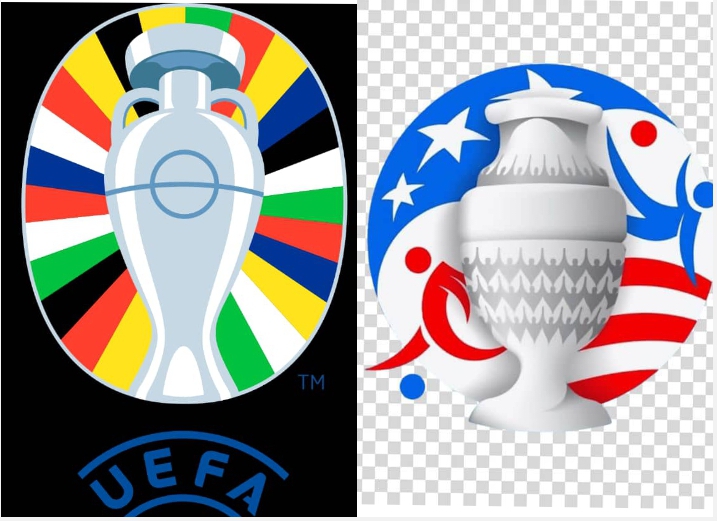Euro Vs Copa America: History, Format, Global Impact, Others

The UEFA European Championship (Euro) and the Copa America are two of the most prestigious international football tournaments, representing the pinnacle of footballing excellence in Europe and South America, respectively. Here’s a detailed comparison of the two tournaments:
History and Origin:
- Euro: The European Championship was first held in 1960. It is organized by the Union of European Football Associations (UEFA). The tournament has grown in prestige and popularity over the years.
- Copa America: The Copa America is the oldest international continental football competition, first held in 1916. It is organized by the South American Football Confederation (CONMEBOL). Format:
- Euro: The Euro features 24 teams (since 2016) competing in a month-long tournament, with a group stage followed by knockout rounds. The teams are selected through a qualification process that involves all UEFA member nations.
- Copa America: The Copa America usually features 12 teams (all 10 CONMEBOL nations plus two invited teams). The format consists of a group stage followed by knockout rounds. In recent editions, the tournament has sometimes included 16 teams. Frequency:
- Euro: The tournament is held every four years.
- Copa America: Traditionally held every four years, but it has seen irregular scheduling, with some editions occurring more frequently to align with specific anniversaries or other events. Level of Competition:
- **Euro: The Euro is considered one of the toughest football tournaments due to the high quality and depth of European teams. Countries like Germany, Spain, France, Italy, and England have strong footballing traditions and highly competitive leagues.
- Copa America: The Copa America also features top footballing nations, notably Brazil and Argentina. Other nations like Uruguay, Chile, and Colombia have strong footballing cultures and have performed well historically. Global Impact:
- Euro: The Euro has a massive global following, with significant viewership not only in Europe but also worldwide. European football clubs and players have a strong presence and influence globally.
- Copa America: The Copa America also enjoys a large global audience, particularly in the Americas. South American players have a significant impact on global football, with many of the world’s best players hailing from this region. Style of Play:
- Euro: European football is characterized by tactical discipline, physicality, and a mix of attacking and defensive styles. The diversity in playing styles reflects the different footballing philosophies across European nations.
- Copa America: South American football is known for its flair, creativity, and technical skills. The matches often feature intense rivalries and passionate play, reflecting the deep football culture in the region.
Key Moments and Historical Significance: - Euro: Memorable moments include Denmark’s unexpected victory in 1992, Greece’s shock win in 2004, and Spain’s dominance in 2008 and 2012. The Euro has produced many legendary matches and iconic footballing moments.
- Copa America: Historic moments include Uruguay’s dominance in the early years, Brazil’s memorable wins, and Argentina’s resurgence with Lionel Messi. The tournament is known for dramatic matches and historic rivalries, such as Brazil vs. Argentina.
Conclusion:
Both the Euro and Copa America are prestigious tournaments with rich histories and unique characteristics. The Euro is known for its high level of competition and tactical variety, while the Copa America is celebrated for its passionate play and historic rivalries. Each tournament brings together the best of their respective continents, showcasing the diversity and beauty of global football.